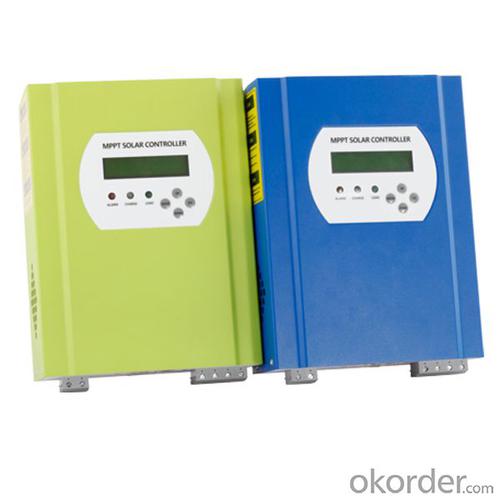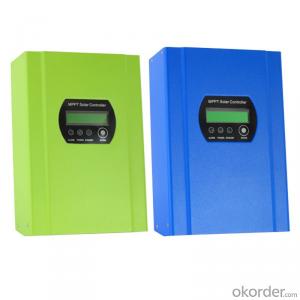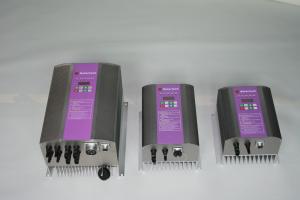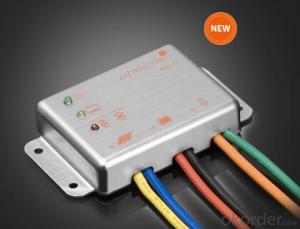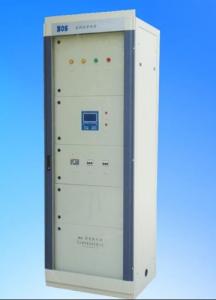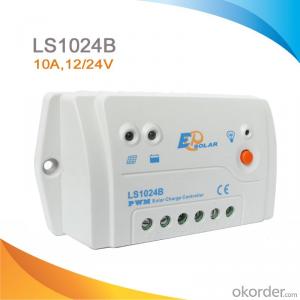Best Charge Controllers for Solar:DC 12V/24V/48V Auto Work 20A Solar MPPT Battery Charger Controller
- Loading Port:
- China main port
- Payment Terms:
- TT OR LC
- Min Order Qty:
- 20 unit
- Supply Capability:
- 9999 unit/month
OKorder Service Pledge
OKorder Financial Service
You Might Also Like
Smart2 20A Solar MPPT Battery Charger Controller
More Pictures
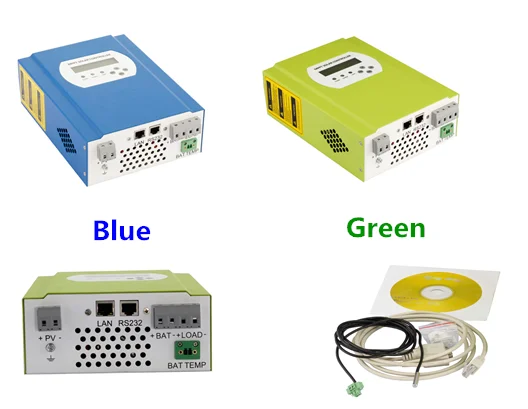
LAN/RS232 connecting
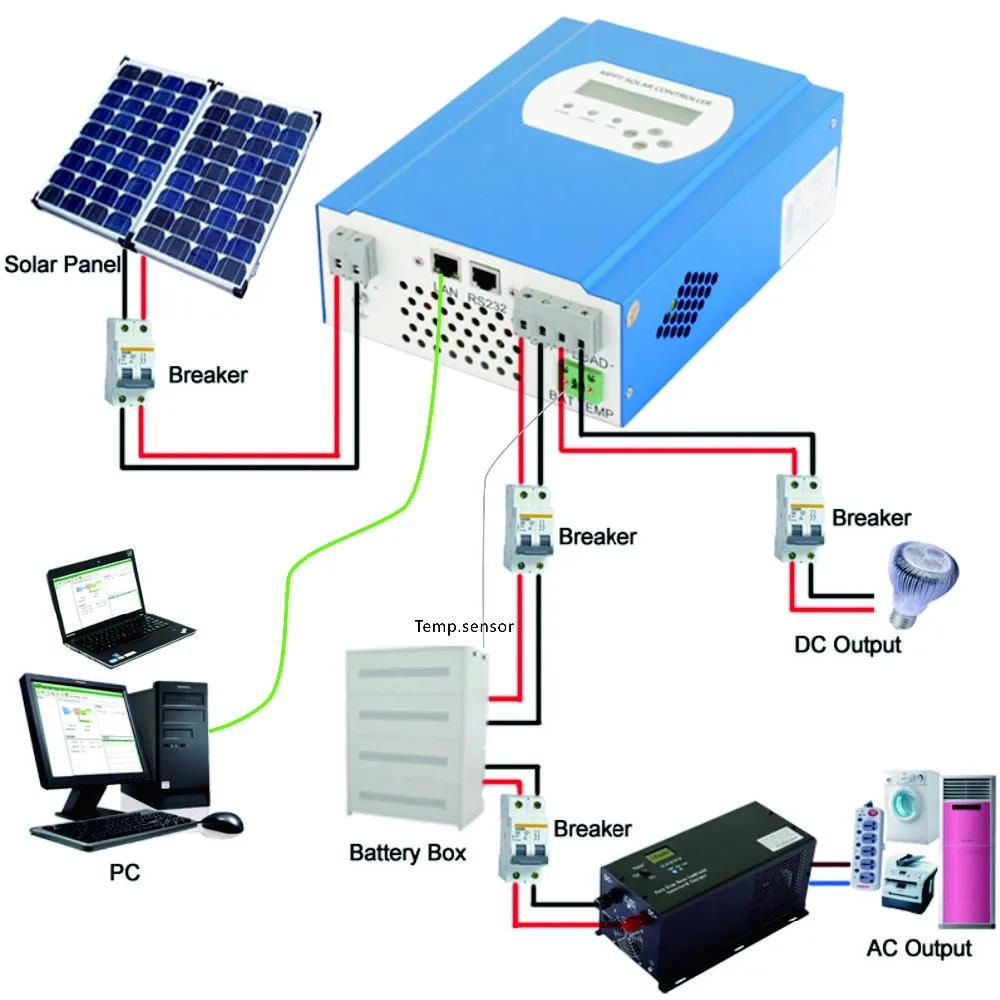
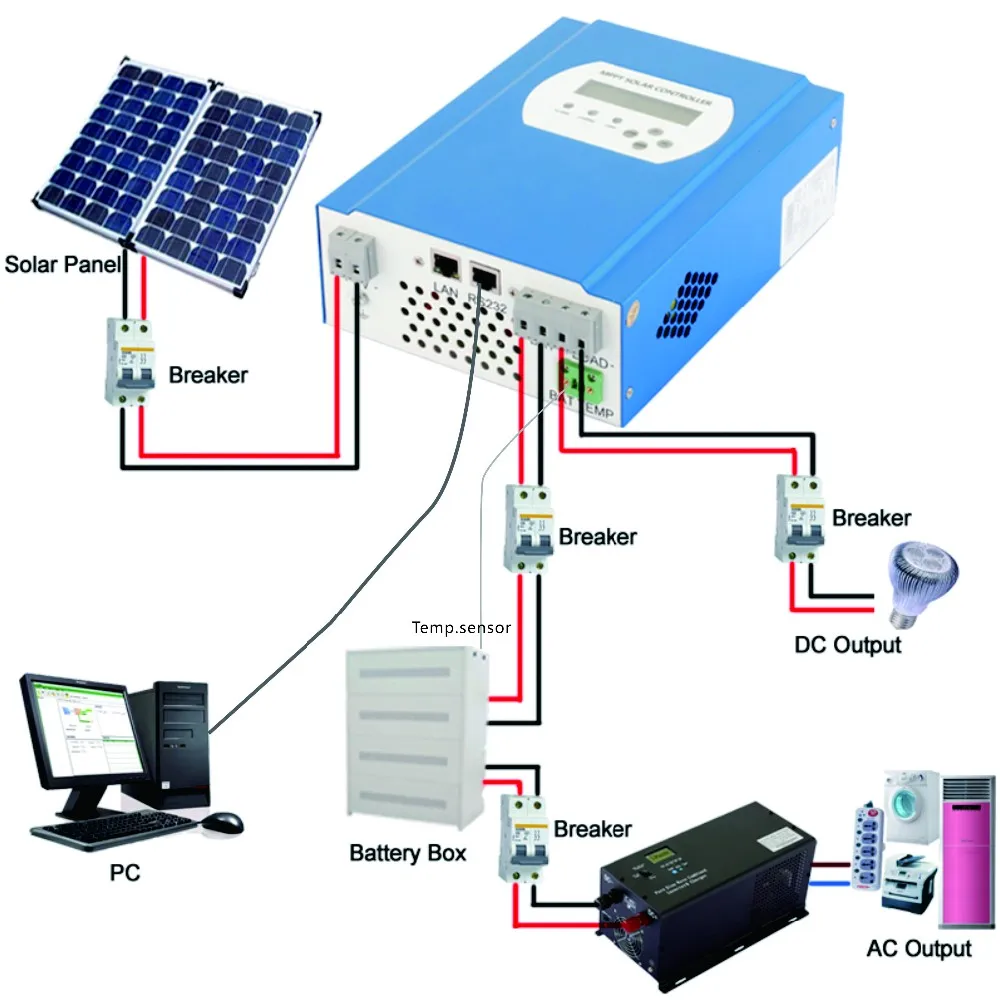
Upper PC software (real time monitor)
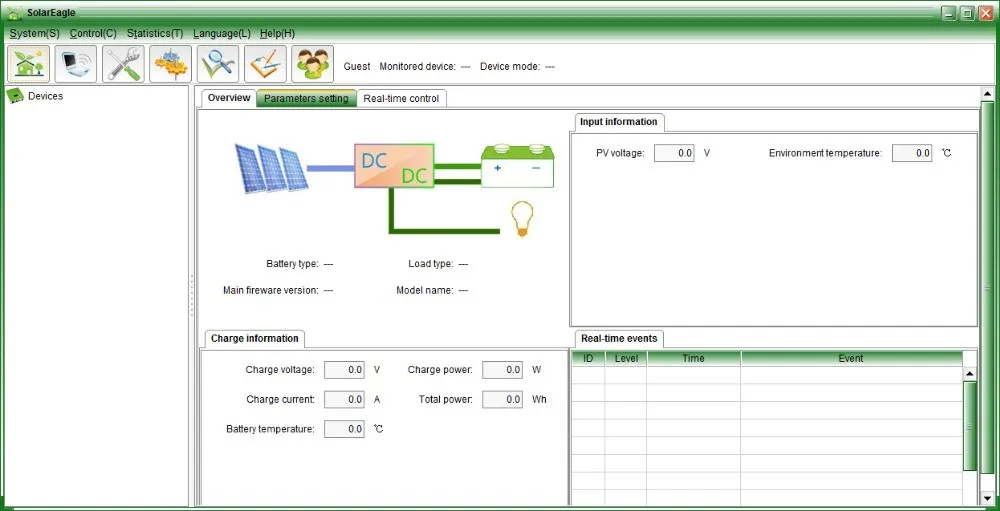
Application
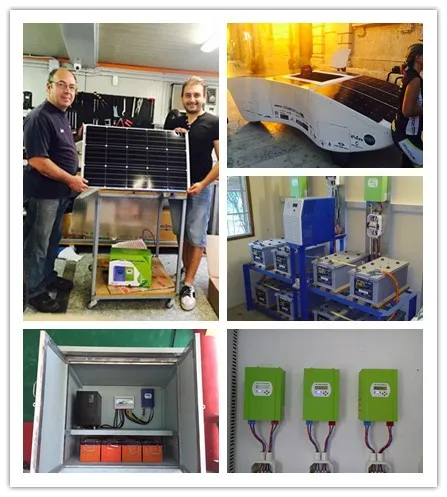
Feature
1. MPPT charging mode, conversion efficiency upto 99%
2. Maximum PV input voltage up to DC150V
3. RS232 and LAN communication port
4.Discharge mode: ON/OFF mode, double time control mode, PV voltage control mode, PV voltage+time delay mode.
5.LCD and LED show various parameters
6. Controllers can be connected in unlimited parallels
7. CE,RoHS, FCC certification approved
8. 2 years warranty, lifelong free technical service.
Parameter
| Model:I-P-SMART2-20A/25A/30A -series | 20A | 25A | 30A | ||
| Charge Mode | Maximum Power Point Tracking | ||||
| Method | 3 stages: fast charge(MPPT),constant voltage, floating charge | ||||
| System Type | DC12V/24V/48V | Automatic recognition | |||
| PV Modules Utilization Rate | 12V/24V/48Vsystem | ≥99% | |||
| Input Characteristics | |||||
| MPPT Working Voltage and Range | 12V system | DC18V~DC150V | |||
| 24V system | DC34~DC150V | ||||
| 48V system | DC65~DC150V | ||||
| Input Overvoltage Protection Point | 12V/24V/48V system | DC150V | |||
| Max. PV Power | 12V system | 286W | 357W | 429W | |
| 24V system | 572W | 715W | 858W | ||
| 48V system | 1144W | 1430W | 1716W | ||
| Output Characteristics | |||||
| Selectable Battery Types | 12V/24V/48Vsystem | Sealed lead acid, vented, Gel, NiCd battery | |||
| (Default type is GEL battery) | (Other types of the batteries also can be defined) | ||||
| Rated Output Current | 12V/24V/48V system | 20A | 25A | 30A | |
| Physical | |||||
| Pc (communication port) | RS232 or LAN | ||||
| Measurement D*W*H(mm) | 220*165*70mm | ||||
| N.G(kg) | 2kg | ||||
| Color | Blue/Green/OEM (optional) | ||||
| Safety | CE, RoHS,FCC | ||||
Certifications |
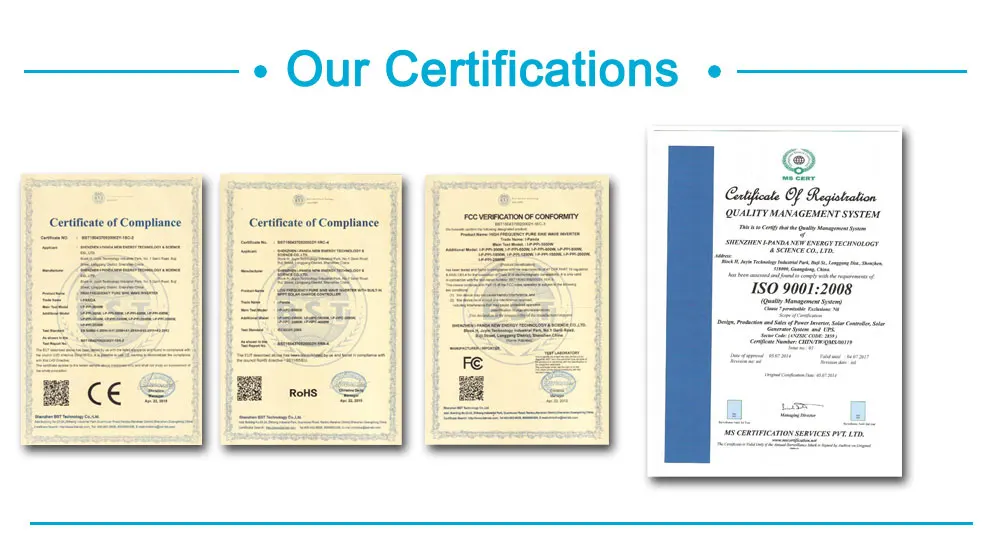
F&Q: |
Q1. How to ensure and monitor the products quality?
A1: We have established a perfect Quality Management System, In strict
accordance with ISO9001: 2008 quality system and ISO14001 environment system for quality assurance management;
Our ISO9001:2008 Quality System certificate encoding: CHIN/TW/QMS/00119;
Our ISO14001 Environment System certificate encoding: CHIN/TW/EMS/00028;
Q2. What is the warranty of products?
A2: The warranty period of different products are different; 5 years, 3 years, 2 years, 1 years; More details please refer to the product specification or manual; we will provide free life-long technical support ;
Q3. What is the difference between MPPT&PWM?
A3. MPPT charging mode, peak efficiency up to 99%, saving 30%~60% solar panel than traditional PWM controller.
- Q: Can a solar controller be used in a solar-powered cruise ship?
- Yes, a solar controller can be used in a solar-powered cruise ship. A solar controller is an essential component in solar power systems as it regulates the charging and discharging of batteries, ensuring the efficient and safe operation of the system. In a solar-powered cruise ship, the solar controller would be used to manage the energy flow from the solar panels to the batteries, ensuring optimal power generation and storage.
- Q: How does a solar controller handle battery overvoltage protection?
- A solar controller handles battery overvoltage protection by monitoring the voltage level of the battery. When the voltage exceeds a certain threshold, the controller activates a protection mechanism to prevent further charging. This can include reducing or stopping the flow of current from the solar panels to the battery, thereby preventing overcharging and potential damage to the battery.
- Q: How do I connect a solar controller to a battery bank?
- To establish a connection between a solar controller and a battery bank, adhere to the subsequent guidelines: 1. Commence by situating the solar controller in close proximity to the battery bank, preferably within easy access to both the solar panels and the batteries. 2. Ascertain the positive and negative terminals on both the solar controller and the battery bank. Typically, the positive terminal is indicated by a "+" symbol or a red color, while the negative terminal is marked with a "-" symbol or a black color. 3. Employ a suitably sized cable or wire to link the positive terminal of the solar controller to the positive terminal of the battery bank. Guarantee that the connection is secure and firmly fastened. 4. Employ another appropriately sized cable or wire to connect the negative terminal of the solar controller to the negative terminal of the battery bank. Once again, ensure the connection is secure. 5. Thoroughly inspect all connections to verify the absence of loose or exposed wires that could potentially lead to a short circuit or other safety hazards. 6. Subsequent to confirming the security of all connections, activate the solar controller and adhere to the manufacturer's instructions to configure the settings, such as battery type and charging parameters, if necessary. 7. Regularly monitor the solar controller to ensure proper functionality and efficient charging of the battery bank. Adjust the settings as required to optimize the charging process. Always consult the manufacturer's instructions for your specific solar controller and battery bank to guarantee proper installation and operation. If uncertain about any step of the process, it is advisable to seek guidance from a professional or an experienced individual.
- Q: How do I protect a solar controller from theft or vandalism?
- There are a few effective measures you can take to protect a solar controller from theft or vandalism. Firstly, consider installing the controller in a secure and inconspicuous location, making it less visible and accessible to potential thieves. Additionally, you can use tamper-proof screws or locks to secure the controller's enclosure, making it harder to remove. Installing a surveillance camera or an alarm system in the vicinity can act as a deterrent and help in identifying any suspicious activity. Lastly, it's advisable to clearly mark the solar controller with warning signs indicating surveillance or security measures, which can discourage potential vandals or thieves.
- Q: Can a solar controller be used with different battery types (AGM, gel, flooded)?
- A solar controller is capable of being used with various battery types, such as AGM, gel, and flooded batteries. However, it is crucial to choose a solar controller that is suitable for the specific battery type being utilized. Different battery chemistries possess different charging requirements, and a solar controller designed for one battery type may not effectively charge or maintain the charge of another battery type. Most contemporary solar controllers can adjust their charging algorithms to accommodate different battery types. They typically offer settings or modes that can be selected to optimize the charging parameters for AGM, gel, or flooded batteries. These settings guarantee that the solar controller supplies the correct charging voltage and current to the battery, preventing overcharging or undercharging, which can harm the battery and diminish its lifespan. When selecting a solar controller, it is crucial to review its specifications and ensure that it explicitly states compatibility with the intended battery type. Moreover, it is advisable to adhere to the manufacturer's recommendations and guidelines for proper setup and configuration of the solar controller to ensure efficient and safe charging of the battery.
- Q: What is the maximum power consumption of a solar controller?
- The maximum power consumption of a solar controller can vary depending on its specific design and features. Generally, the power consumption of a solar controller is quite low, typically ranging from a few milliwatts to a few watts. This low power consumption allows the controller to efficiently regulate and manage the energy flow from the solar panels to the battery or load.
- Q: Can a solar controller be used with a solar-powered outdoor entertainment system?
- Yes, a solar controller can be used with a solar-powered outdoor entertainment system. A solar controller helps regulate the charging and discharging of the batteries connected to the solar panels, ensuring efficient and optimal power management. This is essential for maintaining a stable power supply to the outdoor entertainment system, allowing it to operate effectively even in varying sunlight conditions.
- Q: Can a solar controller be used with solar-powered security systems?
- Yes, a solar controller can be used with solar-powered security systems. A solar controller is responsible for regulating the flow of energy from solar panels to batteries, ensuring efficient charging and preventing overcharging. This is crucial for solar-powered security systems as it helps maintain a stable power supply and prolongs the lifespan of the batteries.
- Q: Can a solar controller be used with solar panel cleaning drones?
- Yes, a solar controller can be used with solar panel cleaning drones. The solar controller is responsible for regulating the power flow from the solar panels to the drone's batteries, ensuring optimal charging and preventing overcharging. By using a solar controller, the cleaning drones can effectively utilize solar energy to power their operations while maintaining the health of their batteries.
- Q: How does a solar controller regulate the charging current?
- The charging current of the solar panel and battery is regulated by a solar controller, which monitors the voltage and current levels. Its purpose is to prevent overcharging of the battery by limiting the current flow when the battery reaches its maximum voltage. To achieve this regulation, the controller employs either pulse width modulation (PWM) or maximum power point tracking (MPPT) techniques. In a PWM solar controller, the controller controls the average charging current by rapidly turning the solar panel's current on and off. When the battery voltage is low, the controller allows a maximum charging current, which gradually decreases as the battery voltage rises. This prevents overcharging and damage to the battery. On the other hand, an MPPT solar controller utilizes a more advanced algorithm to continuously track the maximum power point (MPP) of the solar panel. The MPP represents the optimal voltage and current combination at which the solar panel can deliver its maximum power output. The controller adjusts the charging current accordingly to ensure that the panel operates at its MPP, resulting in maximum power transfer to the battery. Both PWM and MPPT controllers are efficient in regulating the charging current, thus preventing overcharging and extending the battery's lifespan. The choice between the two depends on factors such as the characteristics of the solar panel, battery type, and system requirements.
Send your message to us
Best Charge Controllers for Solar:DC 12V/24V/48V Auto Work 20A Solar MPPT Battery Charger Controller
- Loading Port:
- China main port
- Payment Terms:
- TT OR LC
- Min Order Qty:
- 20 unit
- Supply Capability:
- 9999 unit/month
OKorder Service Pledge
OKorder Financial Service
Similar products
Hot products
Hot Searches
Related keywords



